The Species
To understand bird–of–paradise evolution, biologists have organized closely related species into 15 groups each called a genus (plural: genera). Some of the genera have several species that look pretty similar. Other genera contain just a single unusual species. Look inside each of the 15 genera below and see how taxonomy helps make sense of biological diversity.
Paradisaea
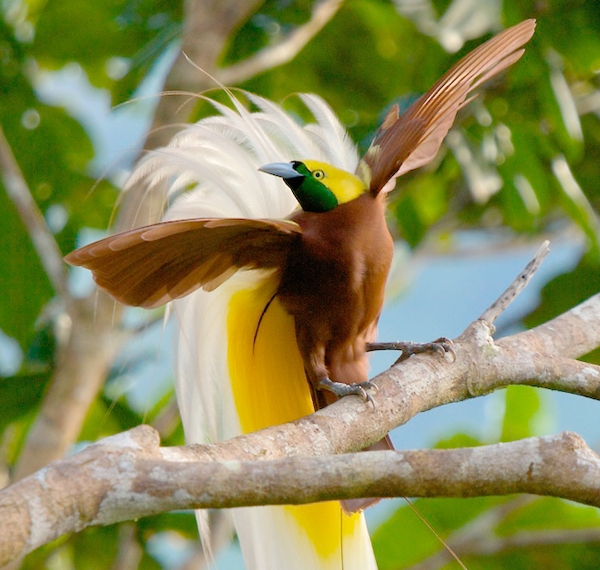
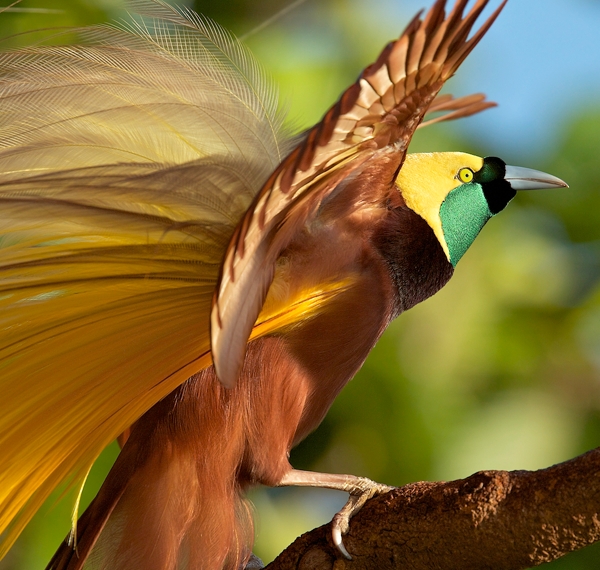
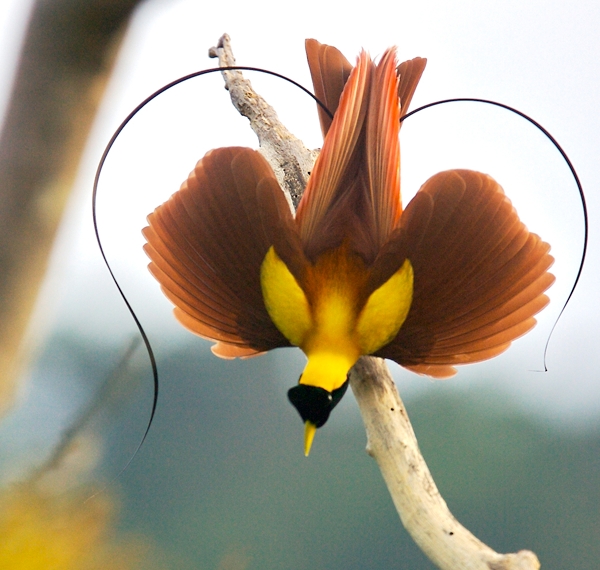
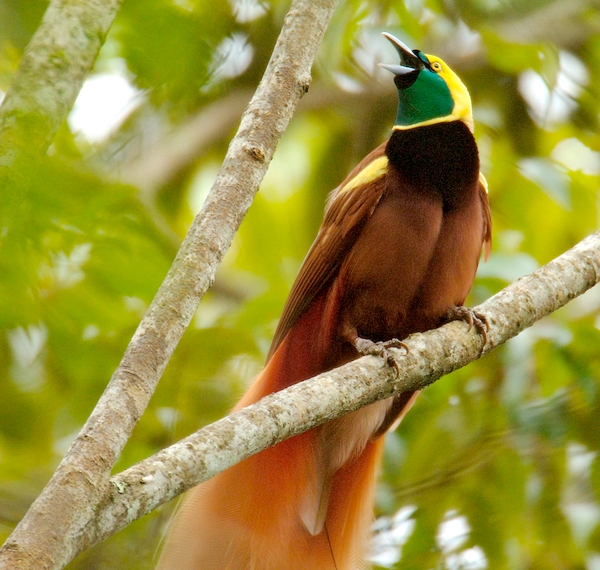
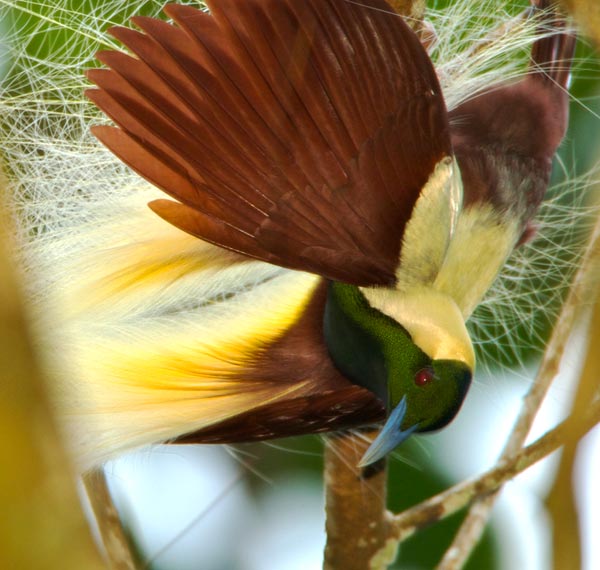
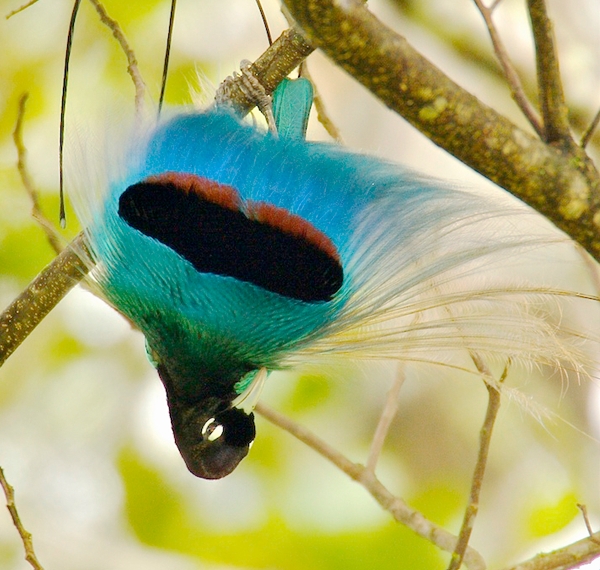
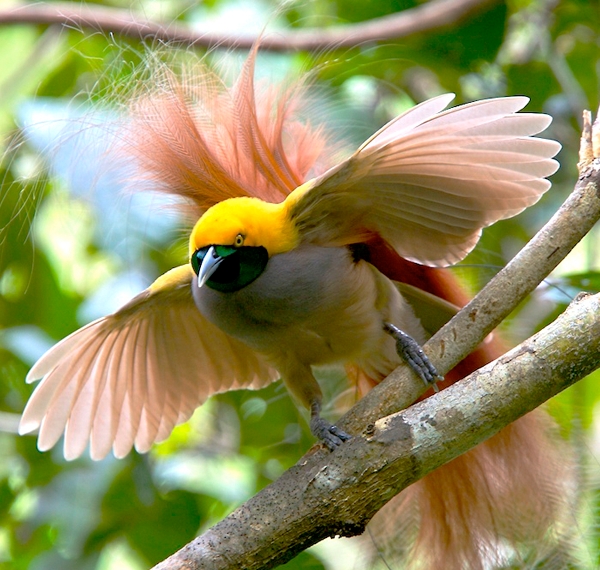
Genus Paradisaea
(7 species)
Males: large, brightly colored birds with showy flank plumes
Females: brown; same general shape as males but without display plumes
Displays: shake colorful plumes, typically perform in groups in rainforest canopy
Mating system: no pair bonds; males provide no parental care
Range: lowlands to 6,500 feet of New Guinea and nearby islands
“Sickle-tails”
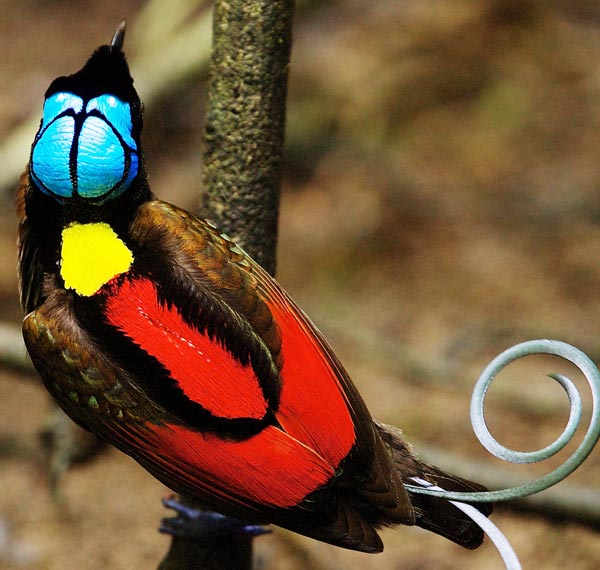
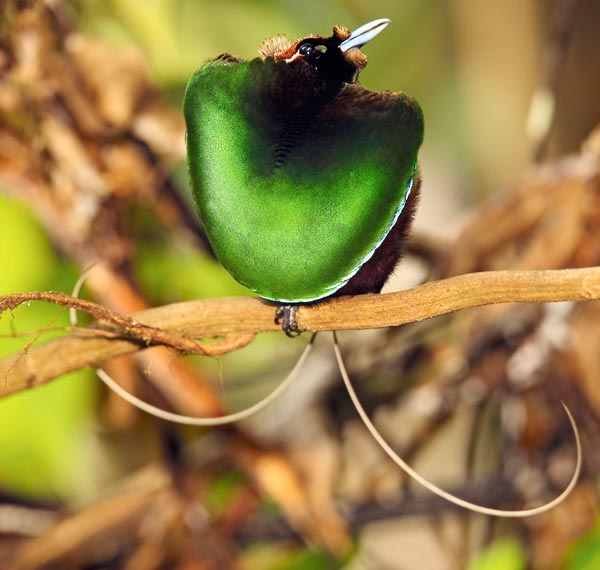
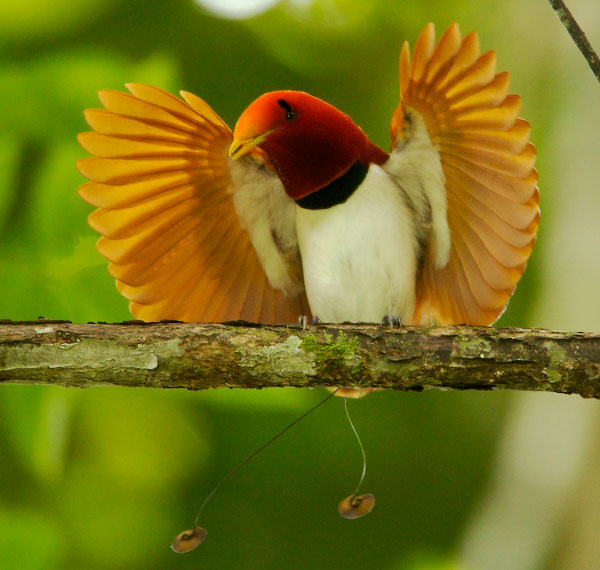
Genus Cicinnurus
(3 species)
Males: small, very brightly colored birds with long, wirelike tail feathers
Females: same general shape as males but without display feathers, sometimes skin shows males coloration
Displays: males display their bright colors in carefully maintained courts on the ground or tree branches
Mating system: no pair bonds; males provide no parental care
Range: lowlands to 5,000 feet in New Guinea plus one nearby island
Astrapias
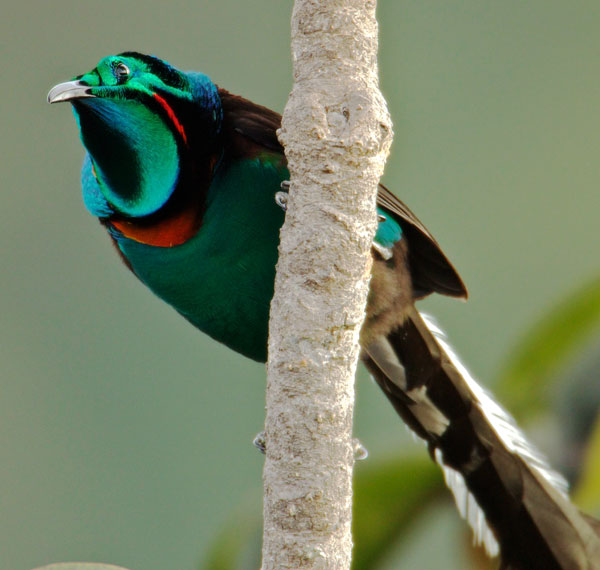
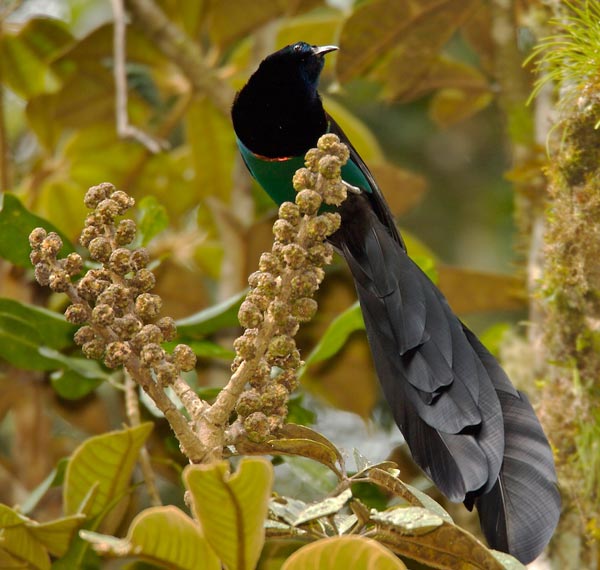
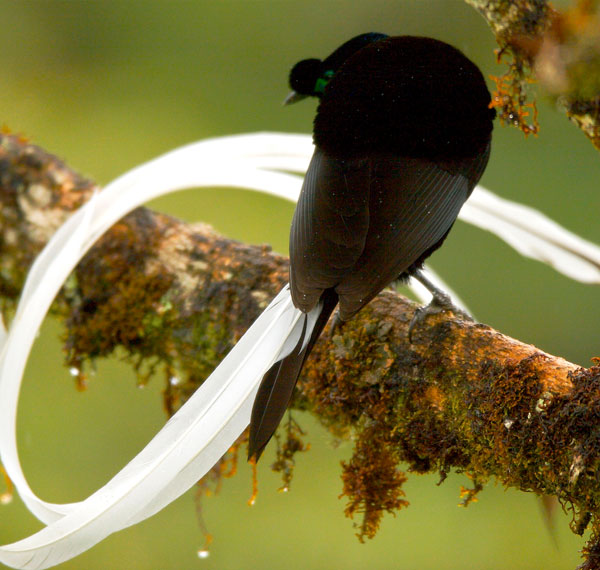
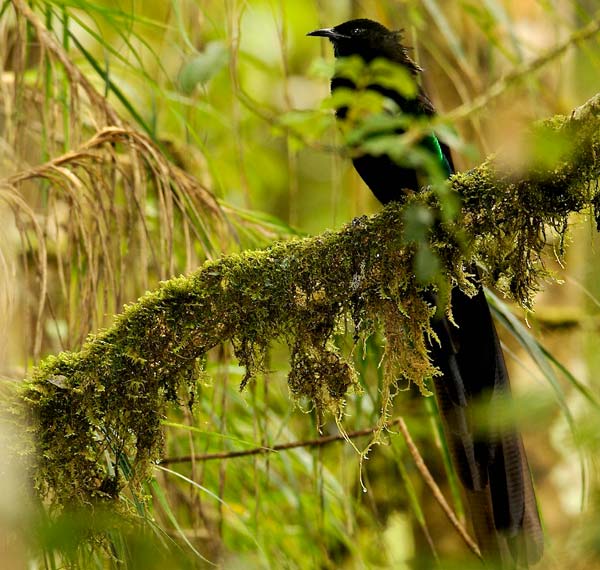
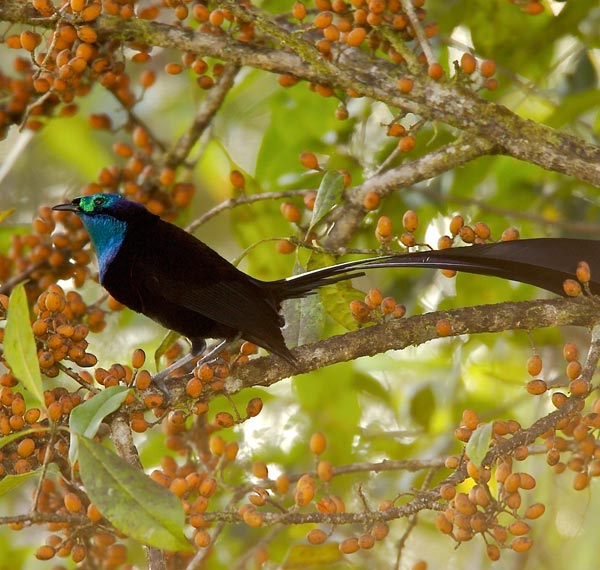
Genus Astrapia
(5 species)
Males: large, dark, iridescent birds of the highlands, with long to very long tails
Females: lack male’s iridescence; nesting habits poorly known
Displays: poorly known; pivoting from side to side and waving or fanning of long tails
Mating system: no pair bonds; males provide no parental care
Range: mountains from 5,000 to 11,500 feet in New Guinea
Paradigallas
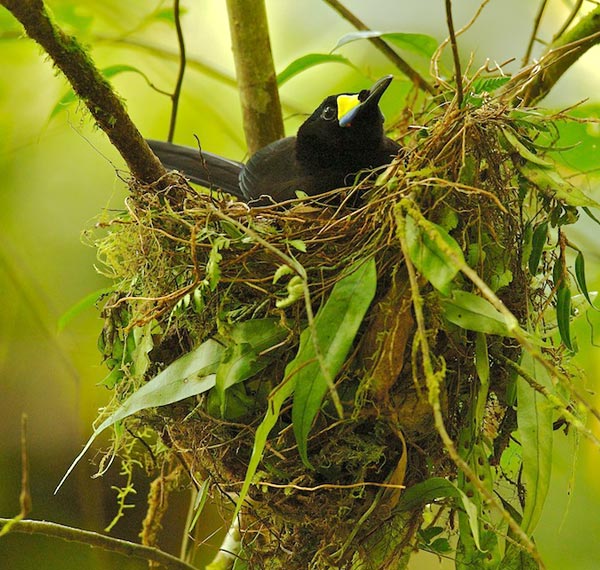
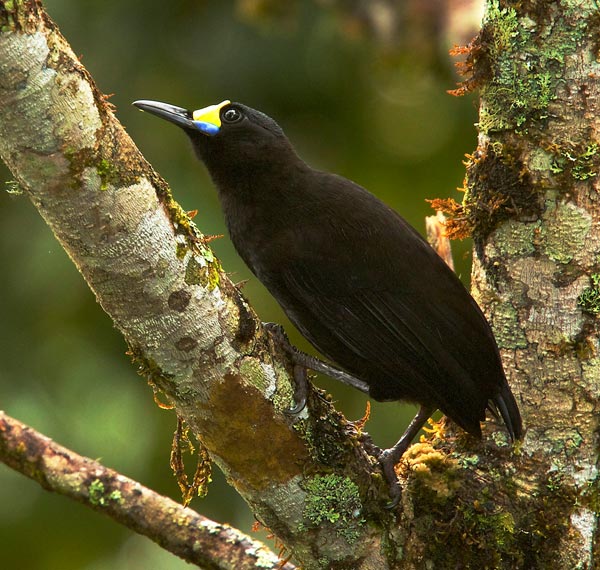
Genus Paradigalla
(2 species)
Males: dark, short-tailed birds with red, blue, and yellow facial wattles
Females: look similar to males
Displays: unknown
Mating system: limited observations suggest males provide no parental care
Range: mountains from 5,000 to 8,200 feet in New Guinea
“Long-tailed” Sicklebills
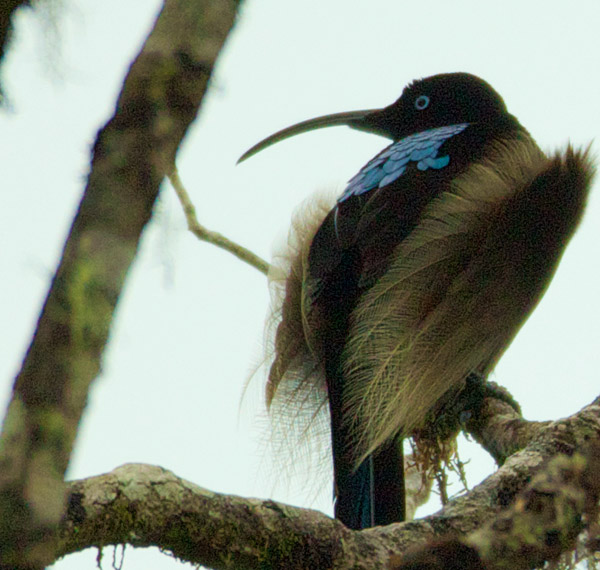
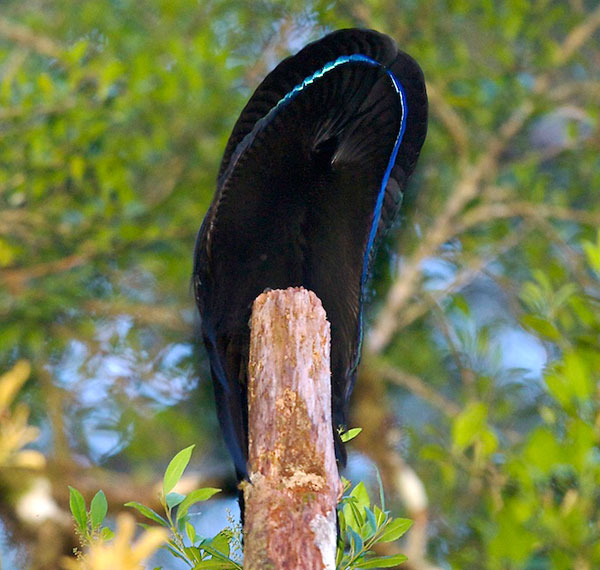
Genus Epimachus
(2 species)
Males: slender, dark birds with very long tails and long, curved bills
Females: brown; same general shape as males but without display feathers
Displays: Shape Shifters—perched males transform their body outline to a long, cometlike oval
Mating system: no pair bonds; males provide no parental care
Range: cloud forests from 5,000 to 10,000 feet in New Guinea
Riflebirds
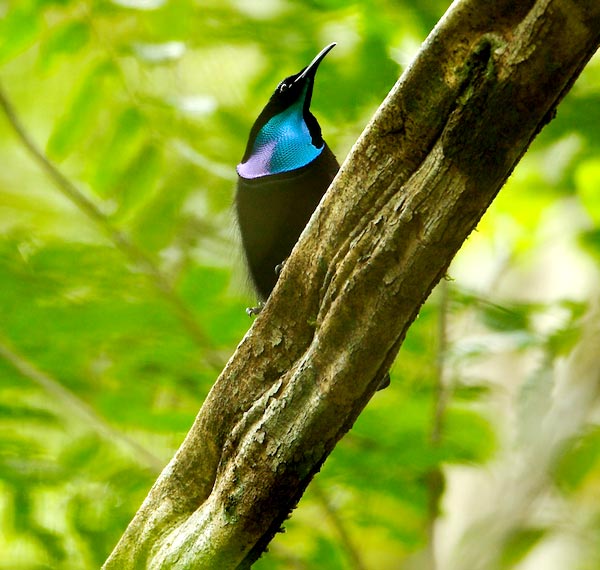
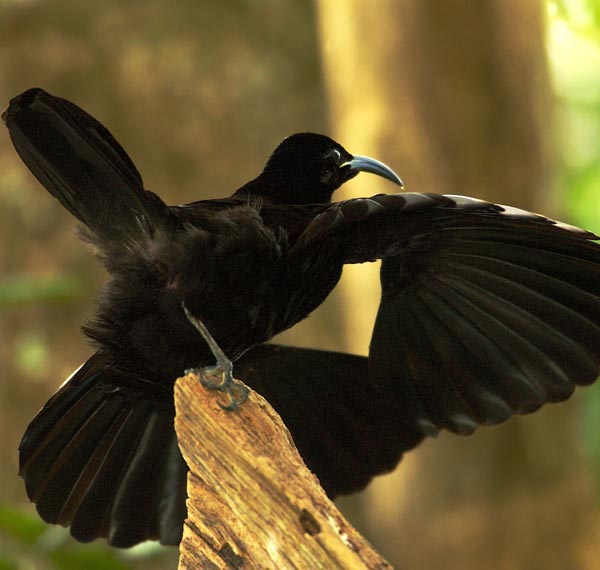
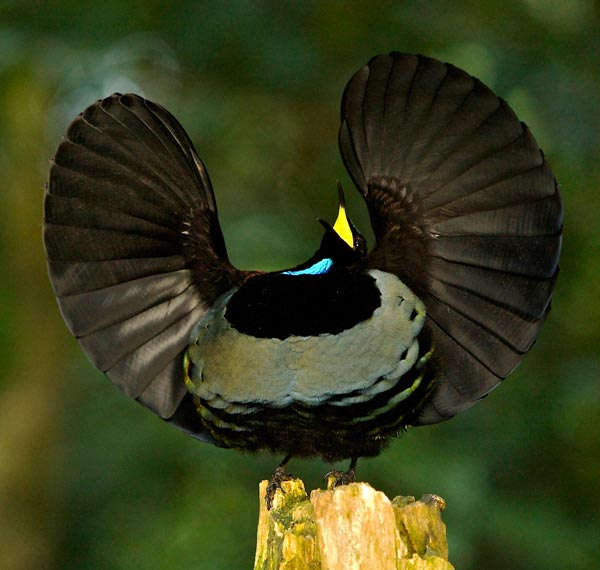
Genus Ptiloris
(3 species)
Males: plump, dark, velvety birds with iridescent blue throats
Females: brown, without iridescence
Displays: Shape Shifters—males perch on a stump and “salute” with fanned wings; females participate
Mating system: no pair bonds; males provide no parental care
Range: low to mid elevations in coastal eastern Australia and New Guinea
Lophorinas
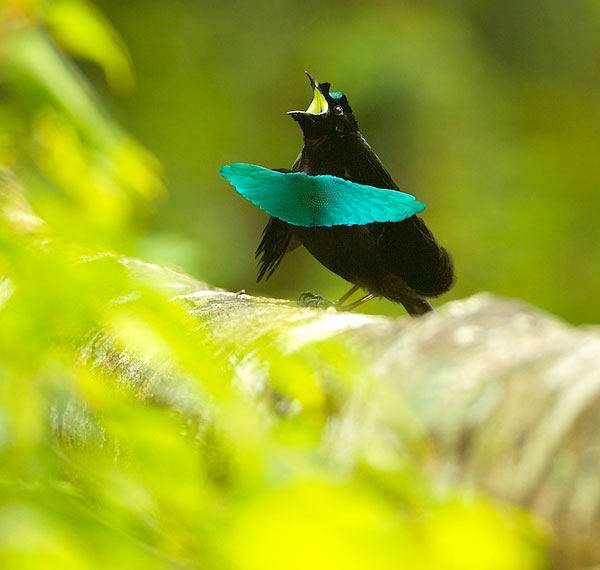
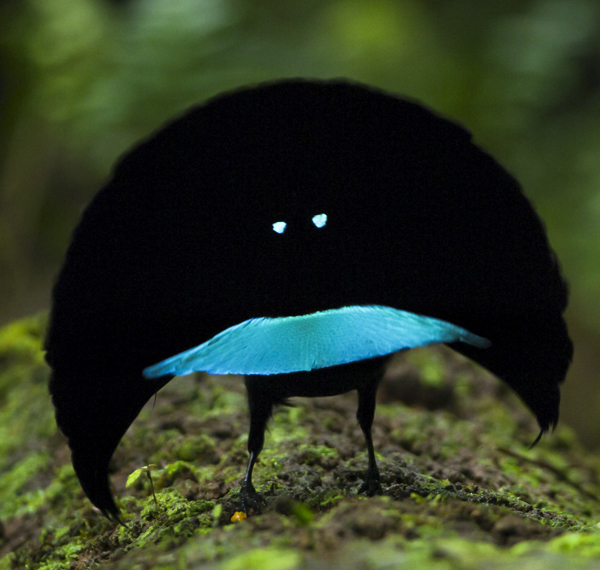
Genus Lophorina
(2 species)
Males: black and iridescent blue, able to totally transform shape
Females: brown, without the male’s specialized display feathers
Displays: Shape Shifters—on a fallen log, males transform their shape into a wide oval with iridescent “smiley face” and hop for females while snapping their wings
Mating system: no pair bonds; males provide no parental care
Range: mid elevations from 5,000 to 6,500 feet in New Guinea
Learn About New Species
Introducing the Vogelkop Superb Bird-of-Paradise (Lophorina niedda), now recognized as a new species, thanks in part to its smooth dance moves.
Standardwing Bird-of-Paradise
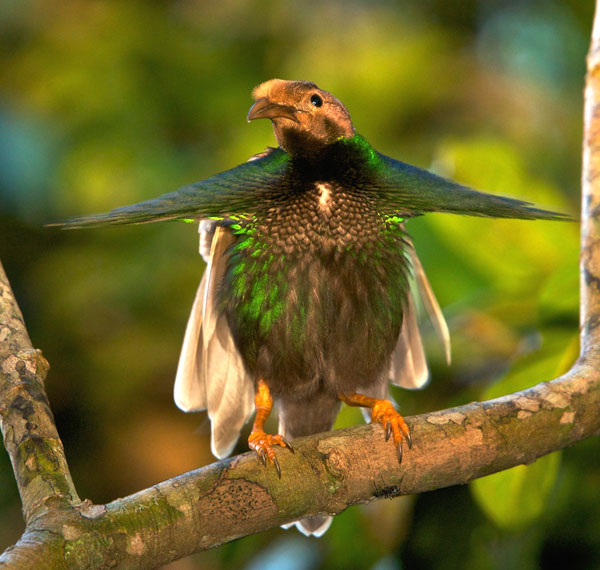
Genus Semioptera
(1 species)
Males: brownish with green breast shield and long white feathers at the wrist of the wing
Females: brown, lacking the male’s specialized display feathers
Displays: groups display in canopy by flying up and down, trailing four white flaglike feathers
Mating system: no pair bonds; males provide no parental care
Range: hill forests of the northern Molucca Islands west of New Guinea
“Short-tailed” Sicklebills
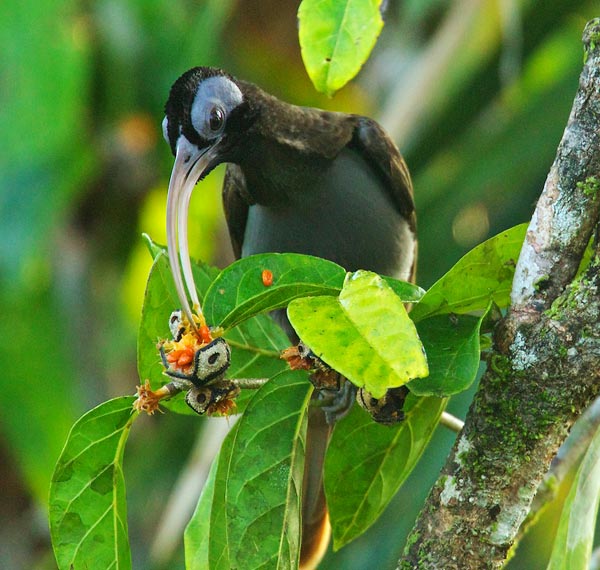
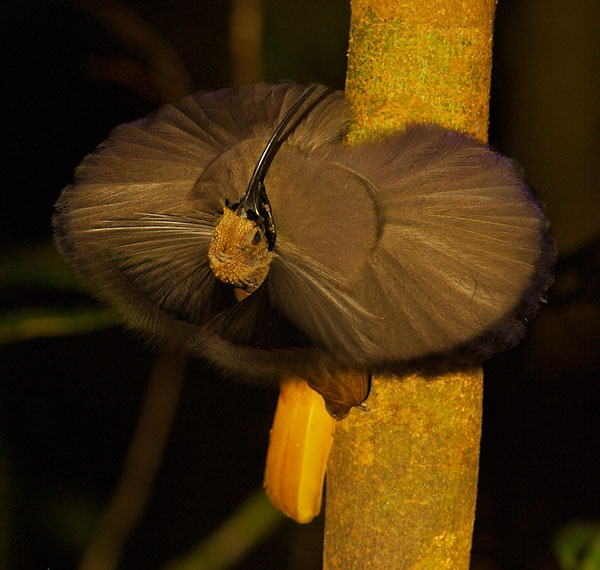
Genus Drepanornis
(2 species)
Males: drab brown birds with long curved bills; not closely related to the other two sicklebills in the family
Females: more similar to males than in many birds-of-paradise
Displays: Shape Shifters—poorly known display includes fanning flank feathers into a disk
Mating system: no pair bonds; males provide no parental care
Range: lowlands up to 6,500 feet in New Guinea
Twelve-wired Bird-of-Paradise
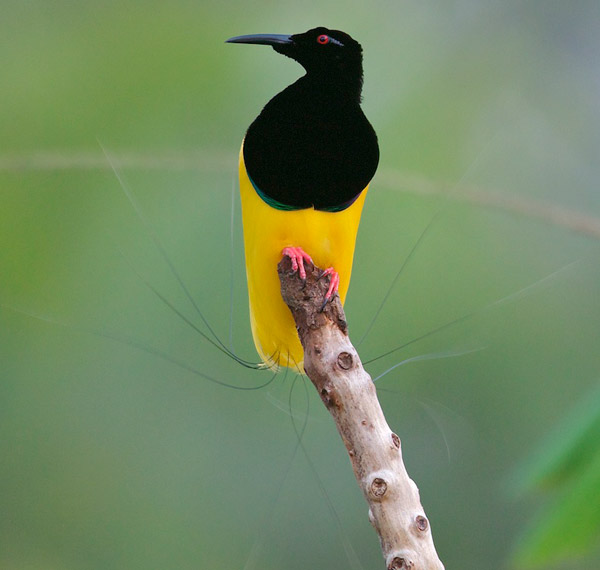
Genus Seleucidis
(1 species)
Males: a black bird with vivid yellow flank plumes with 12 that have unique wiry tips used in display
Females: very different from males
Displays: males climb a pole, turn away from female, wave yellow plumes and brush her with wirelike feathers
Mating system: no pair bonds; males provide no parental care
Range: lowlands and swamps in New Guinea
Parotias
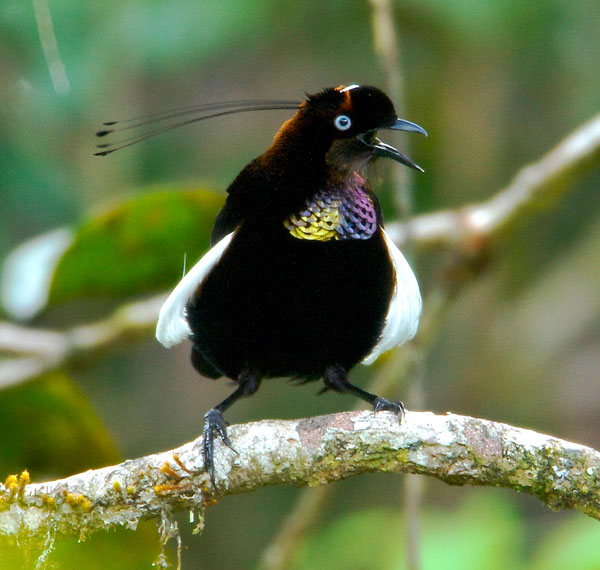
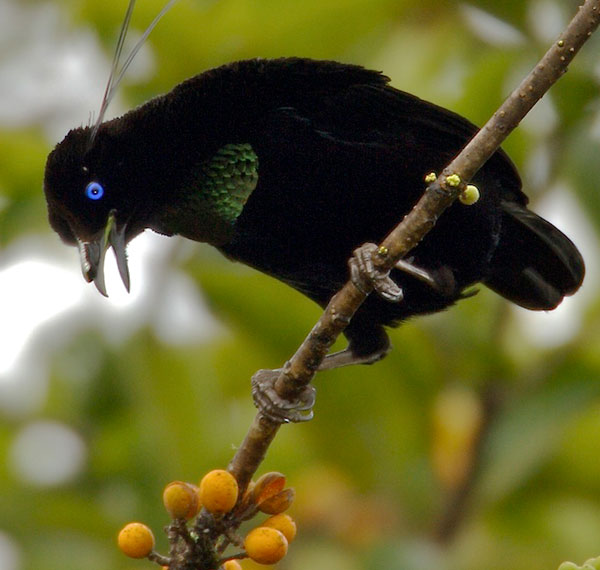
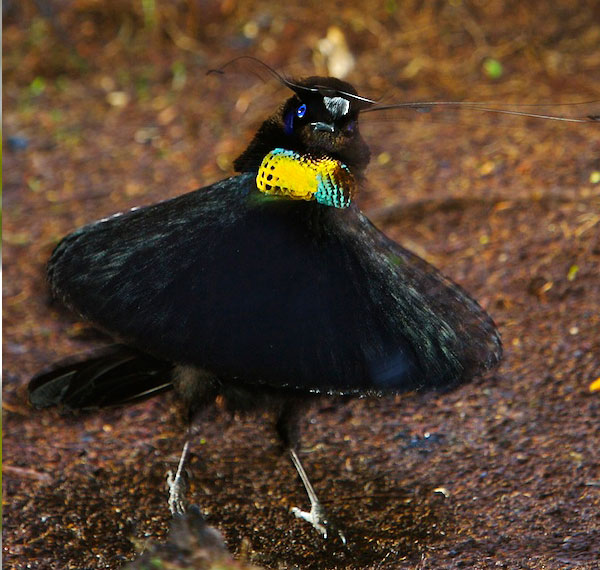
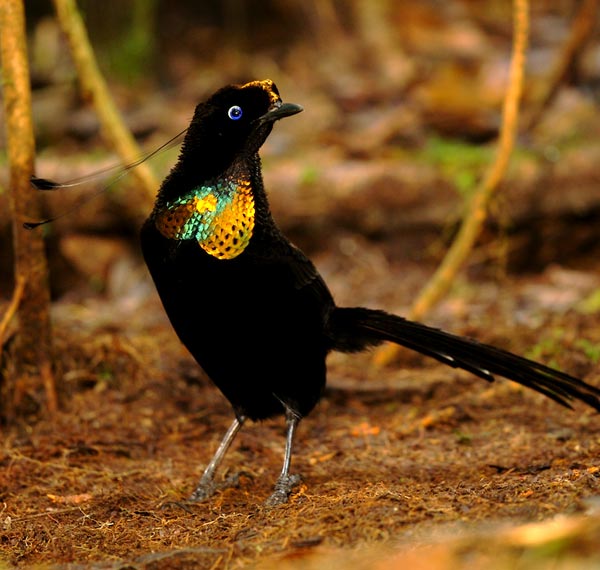
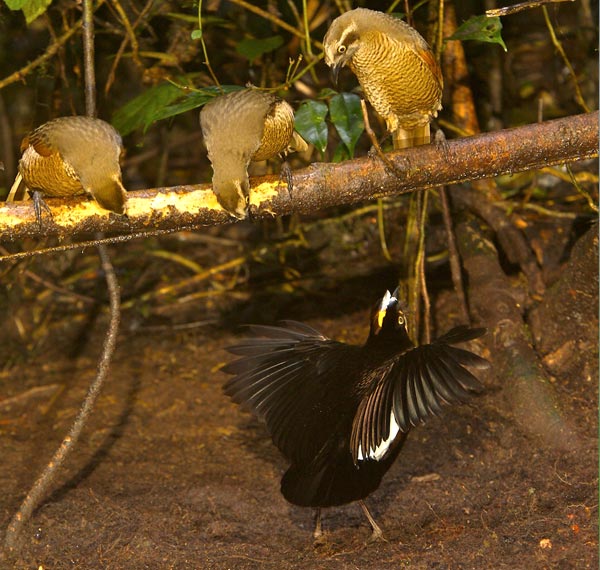
Genus Parotia
(5 species)
Males: mostly black birds with iridescent throats, wirelike head plumes, and flank feathers that form a disk
Females: very different from males
Displays: Shape Shifters—Males dance on a ground “court” they have cleared of debris, with females looking down from a perch above
Mating system: no pair bonds; males provide no parental care
Range: mid-elevation forests at 3,200 to 6,600 feet in New Guinea
King-of-Saxony Bird-of-Paradise
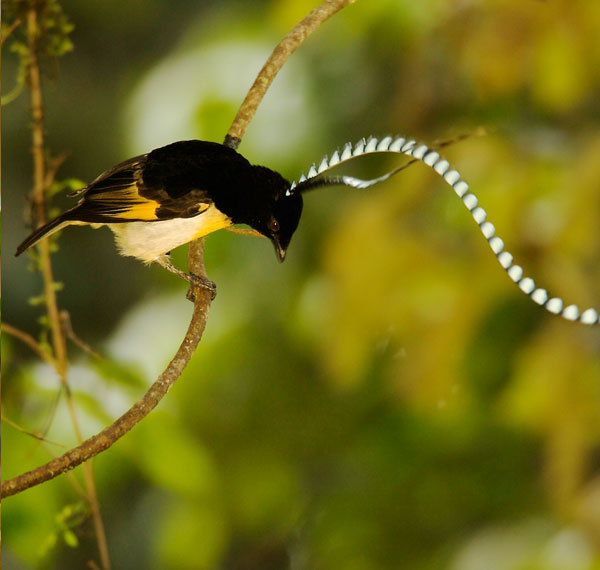
Genus Pteridophora
(1 species)
Males: a small bird with two extremely long head plumes unlike any other feathers in the world
Females: very different from males
Displays: wave head plumes while puffing out chest feathers, bobbing up and down, and making loud, staticky sounds from a vine
Mating system: no pair bonds; males provide no parental care
Range: cloud forests from 5,000 to 8,200 feet in New Guinea
Other Manucodes
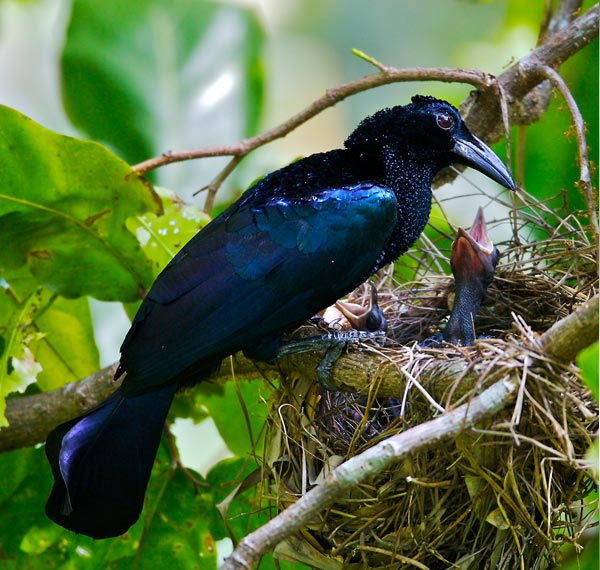
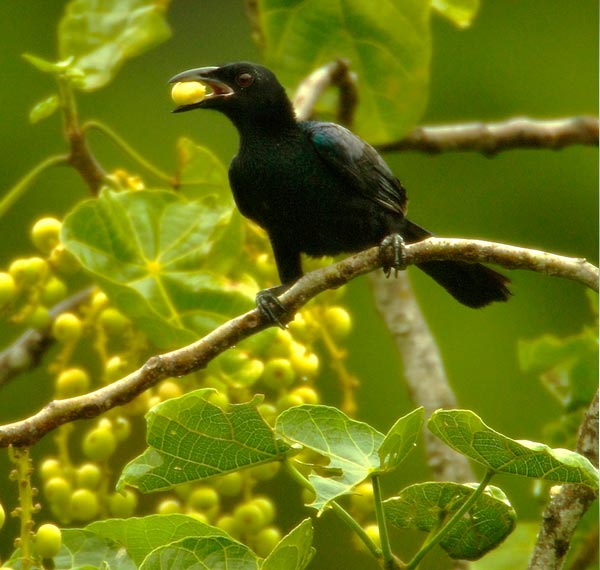
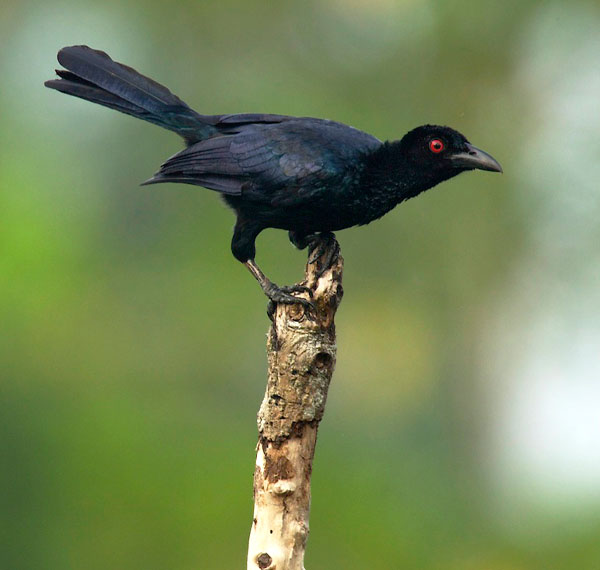
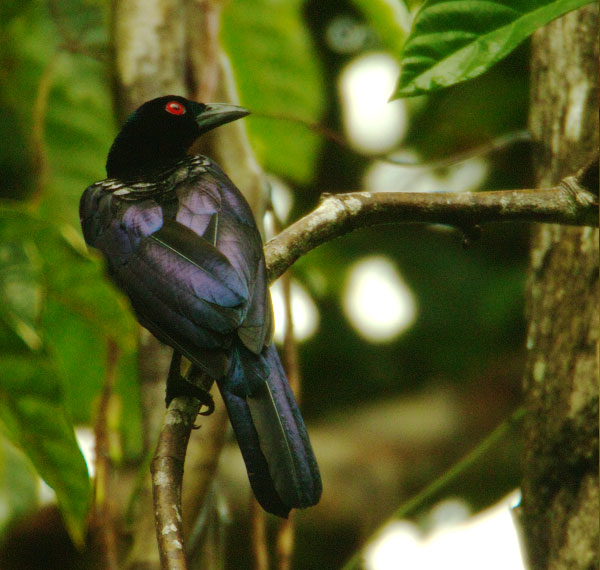
Genus Manucodia
(4 species)
Males: glossy black birds with elaborate vocal anatomy that gives them rich voices
Females: resemble males
Mating system: males help raise young
Displays: males give simple displays accompanied by rich whistled notes
Range: lowlands to mid elevations of New Guinea and a few nearby islands
Trumpet Manucode
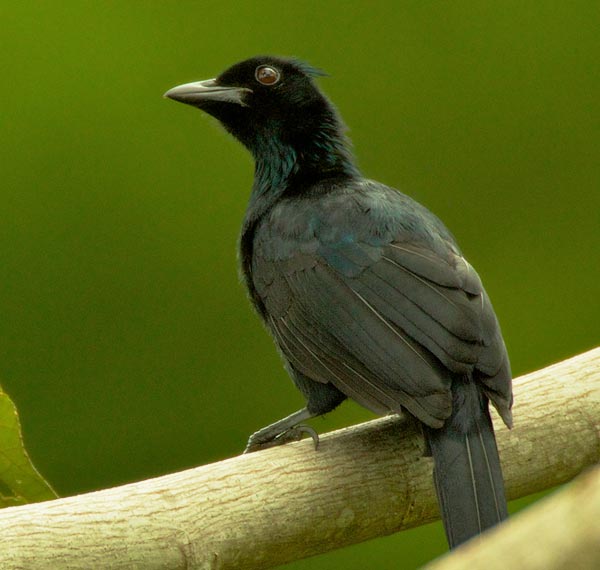
Genus Phonygammus
(1 species)
Males: glossy black birds; males have a greatly enlarged trachea (windpipe) that helps amplify the voice
Females: resemble males, although they lack the male’s vocal anatomy
Displays: singer—does not perform elaborate displays
Mating system: males help raise young
Range: lowlands to mid elevations of far northern Australia New Guinea, and nearby islands
Paradise-crow
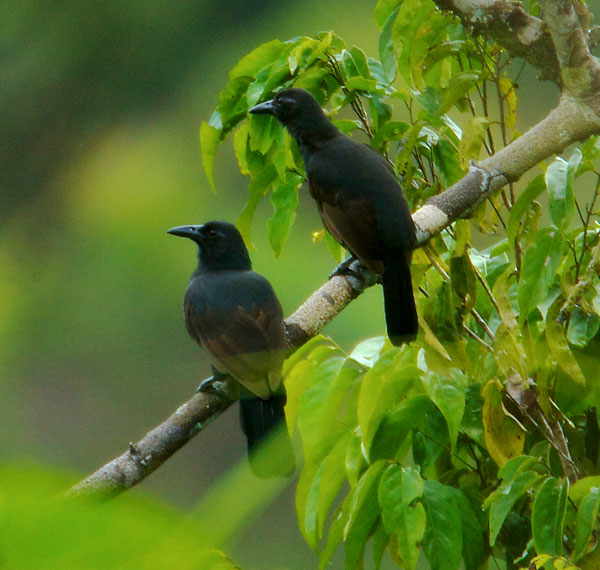
Genus Lycocorax
(1 species)
Males: large, crowlike black birds with brown wings
Females: resemble males
Displays: poorly known
Mating system: males thought to help raise young
Range: Molucca Islands west of New Guinea
